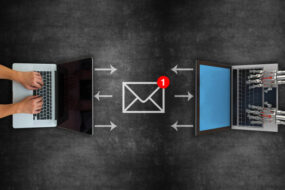ERP Software:

Imagine your supply chain as a meticulously planned road trip. You’ve got your map, your snacks, and a playlist ready to conquer the miles. But what if, along the way, you encounter unexpected detours, traffic jams, and gas shortages? Suddenly, your smooth journey becomes a stressful scramble.
In the world of business, that road trip analogy translates to managing a complex supply chain. With raw materials, production processes, logistics, and distribution all interconnected, even minor disruptions can cause major headaches. That’s where ERP software solutions (enterprise resource planning) come in, acting as your trusty GPS, navigator, and pit crew all rolled into one.
Exploring the Challenges of Modern Supply Chains and ERP Software Solutions:
In today’s globalised economy, supply chains are more intricate than ever. They stretch across continents, involving a multitude of players, from raw material suppliers to distributors and retailers. This complexity brings a host of challenges:
1. Lack of Visibility: Siloed data and manual processes make it difficult to track inventory levels, order statuses, and shipment movements in real time. This lack of transparency can lead to costly errors and missed opportunities.
2. Inefficient Procurement: Managing supplier relationships, negotiating prices, and coordinating deliveries can be time-consuming and error-prone. Traditional methods often lack the automation and data-driven insights needed for optimal procurement.
3. Inventory Management Woes: Balancing inventory levels is a delicate dance. Holding too much stock ties up capital while having too little risk of stockouts and lost sales. Manual inventory management simply can’t keep up with the dynamic demands of modern businesses.
4. Logistical Bottlenecks: Coordinating transportation, warehousing, and last-mile delivery can be a logistical nightmare. Inefficient processes lead to delays, damaged goods, and increased costs.
5. Limited Scalability: As businesses grow, their supply chains need to adapt. Rigid, outdated systems often struggle to accommodate changing demands and expansion, hindering growth and agility.
Read More: The Benefits of B2B Order Management Software
How ERP Software (Enterprise Resource Planning) Solves the Puzzle:

1. ERP software acts as a central nervous system for your supply chain, integrating all critical functions into a single, unified platform. It offers a comprehensive suite of tools and functionalities to tackle the challenges mentioned above, including:
2. Inventory Management: Real-time inventory tracking, automated reordering, and demand forecasting help optimise stock levels and minimise the risk of stockouts or overstocking.
3. Procurement Management: Streamline supplier relationships with automated workflows, e-procurement capabilities, and price negotiation tools.
4. Warehouse Management System (WMS): Optimise warehouse operations with barcode scanning, location tracking, and picking and packing automation for increased efficiency and accuracy.
5. Transportation Management System (TMS): Plan and execute shipments efficiently with route optimisation, carrier management, and real-time tracking.
6. Demand Forecasting: Leverage data analytics to predict customer demand and adjust production and inventory levels accordingly, mitigating the risk of overproduction or underproduction.
7. Business Intelligence (BI): Gain valuable insights from real-time data across your supply chain, enabling informed decision-making and proactive problem-solving.
8. Automation: Automate repetitive tasks like purchase orders, invoices, and shipment confirmations to free up human resources for higher-value activities
Read More: Real-World B2B Software Implementation: Lessons Learned and Best Practices
The Benefits of Streamlined Supply Chains:
Implementing ERP software for your supply chain management doesn’t just solve problems; it unlocks a cascade of benefits:
1. Increased Efficiency: Streamlined processes, automation, and improved visibility lead to faster turnaround times, reduced errors, and higher overall efficiency.
2. Cost Savings: Optimised inventory levels, reduced procurement costs, and efficient logistics translate to significant cost savings across the supply chain.
3. Improved Visibility: Real-time data and centralised reports provide complete transparency, allowing you to track every step of your product’s journey.
4. Enhanced Customer Satisfaction: Faster deliveries, accurate orders, and improved responsiveness lead to happier customers and higher retention rates.
5. Increased Scalability: Flexible and adaptable ERP systems can grow with your business, seamlessly accommodating expansion and changing needs.
6. Competitive Advantage: A well-managed supply chain gives you a strategic edge in today’s dynamic market, enabling you to respond quickly to customer demands and market changes.
How to Choose the Right ERP Software (Enterprise Resource Planning) for Your Business:
With a diverse range of ERP solutions available, choosing the right one for your business is crucial. Consider factors like:
1. Industry Specificity: Some ERP systems are tailored to specific industries, so choose one that understands your unique needs and challenges.
2. Business Size and Needs: Consider your company’s size, complexity, and growth plans when selecting an ERP system. Look for a solution that scales with your needs and adapts to changing conditions.
3. Deployment Options: Cloud-based ERP solutions offer flexibility and scalability, while on-premise systems provide greater control and customisation. Choose the deployment model that best aligns with your budget, IT infrastructure, and security requirements.
4. Integration Capabilities: Make sure the ERP system can seamlessly integrate with your existing software and systems, such as CRM, accounting, and manufacturing tools, to avoid data silos and ensure smooth workflows.
5. Vendor Reputation and Support: Choose an established ERP vendor with a proven track record and a strong customer support infrastructure. Ensure they offer training, implementation assistance, and ongoing maintenance to maximise your return on investment.
Implementing ERP Software (Enterprise Resource Planning) for Success:

Successfully implementing ERP software requires careful planning, communication, and change management. Here are some key steps:
1. Define your goals and requirements: Identify your business objectives for implementing ERP and the specific functionalities you need. This will guide your selection process and ensure the system meets your expectations.
2. Engage Stakeholders: Involve key stakeholders from all departments in the selection and implementation process. This fosters buy-in, identifies potential challenges, and ensures smooth adoption.
3. Data Migration and Integration: Carefully plan and execute data migration from your existing systems to the new ERP platform. Ensure data integrity and seamless integration for accurate reporting and analysis.
4. Training and Change Management: Train users on the new system and provide ongoing support to address challenges and ensure adoption. Clear communication and change management strategies are crucial for successful implementation.
Read More: How B2C Lead Generation Software Can Boost Your Sales
Conclusion:
As technology evolves, ERP solutions are becoming increasingly sophisticated, incorporating artificial intelligence, machine learning, and predictive analytics. These advancements offer even greater visibility, automation, and predictive capabilities, further optimising supply chains and driving business success.
By embracing innovative ERP solutions and continuously streamlining your supply chain, you can navigate the complexities of the modern business world with confidence. Remember, just like that well-planned road trip, a well-managed supply chain takes you further, faster, and with far less stress. So, buckle up, leverage the power of ERP, and enjoy the smooth ride to business success!










